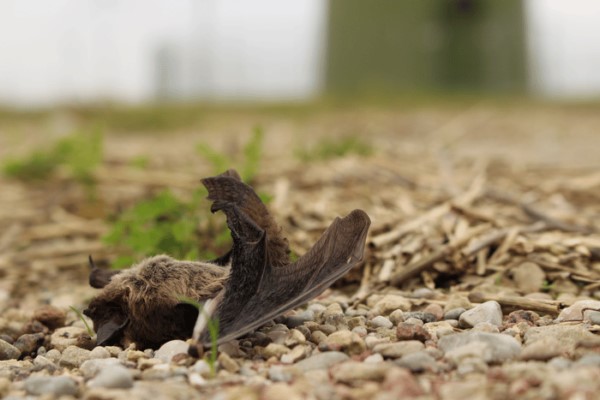The death of numerous bats that collided with the blades of wind turbines can have long-term consequences for the biodiversity of animals in rural areas. This, in turn, can have a negative impact on agriculture and forestry. The study is published in the journal Conservation Science and Practice.

Until now, scientists have only assumed that the death of numerous red evening birds (Nyctalus noctula) from the blades of wind turbines may have negative environmental consequences. Now accurate data have appeared: after studying the diet of bats, the authors of the new work assessed the degree of influence of these modest animals on the entire ecosystem in rural areas in Germany.
The researchers analyzed the contents of the stomachs of 17 red evening birds found under wind turbines: using PCR amplification and high-performance sequencing, scientists searched for genetic “traces” of insects eaten by bats before death.
Since food is digested quickly in a mouse stomach, this method of identifying victims is much more reliable than the “classic” visual one, when a specialist in preserved fragments of chitin establishes the species identity of the insect.
A total of 46 species of insects were identified, most of them were beetles and butterflies, living both in fields and in the forest or even in a swamp. About 20 percent of the identified insect species are considered pests of agriculture and forestry: for example, one larva of the acorn moth (Cydia splendana) can damage up to four acorns, and the chestnut weevil (Curculio elephas) is often found in chestnut fruits already on sale
Separately, it is worth noting their prevalence in the diet of vespers: for example, the weevil was found in 18% of the studied stomachs, the pine cocoonworm (Dendrolimus pini) — in 24%, and the short-whiskered barbel (Spondylis buprestoides), one of the most common pests of coniferous plantings — in 41%.
In other words, insect pests are not accidental, but quite common components of the bat diet, and the disappearance of bats can lead to an increase in the number of pests, which will have to be compensated with chemical insecticides. Providing humanity with green energy, wind turbines, in turn, deprive us of free “services” of bats to control the number of harmful insects.
Although nothing threatens the well-being of the species so far, the increase in the number of wind turbines in Germany cannot but affect the red-haired party girls living there / ©web-zoopark.ru
As calculations have shown, more than ten bats a year die on each wind turbine. Considering that there are about 300 thousand wind turbines operating on the German mainland, the number of bat deaths can reach millions. As measures to combat this, temporary shutdown of wind turbines is already being introduced for the period of the greatest activity of bats, which can reduce the number of diseased animals to one or two per year.
Unfortunately, the wind turbines that are being turned off have not yet become mass-produced, and the old models account for about 75% of all German wind turbines. This means about 200 thousand dead mice per year, which, given the slow rate of reproduction of the evening birds, can lead the once numerous species to the threshold of extinction.
